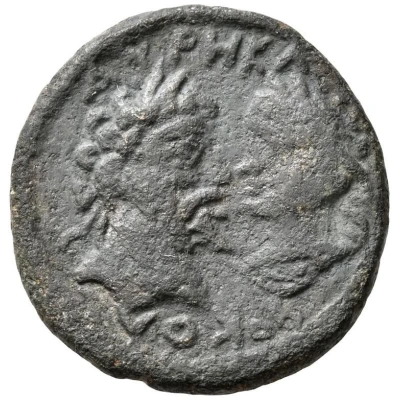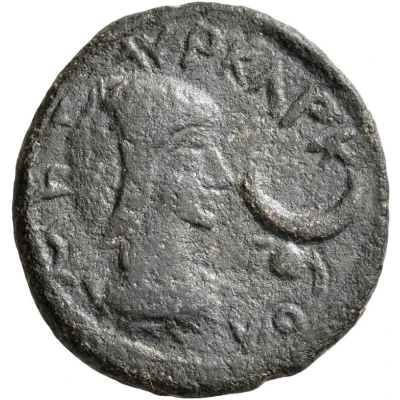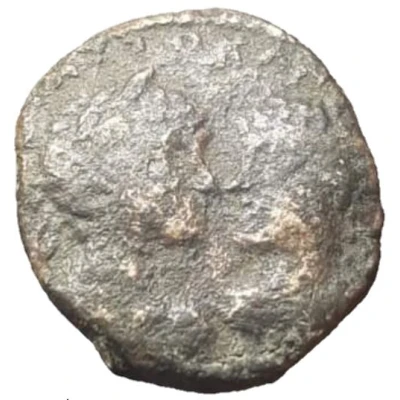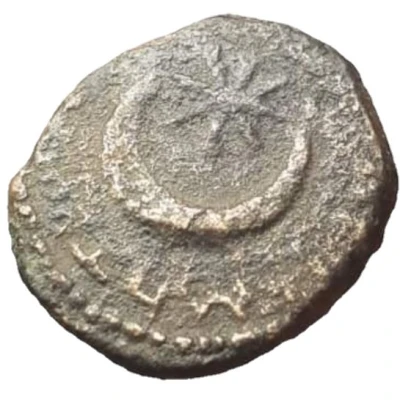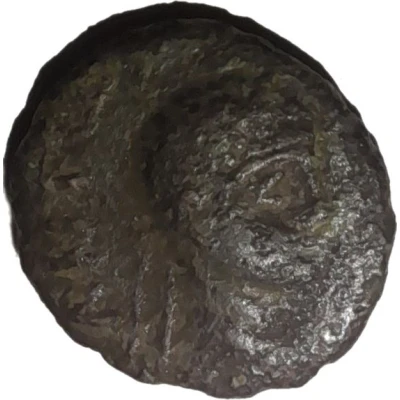
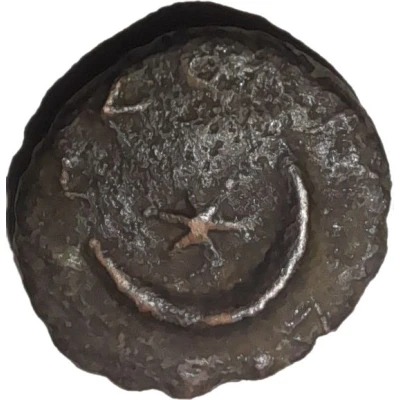

© pimmy (CC BY-NC-SA)
Æ14 - Commodus AVT K KOMO∆OC CEB
| Bronze | 1.88 g | 14 mm |
| Issuer | Carrhae (Mesopotamia) |
|---|---|
| Emperor | Commodus (Lucius Aurelius Commodus) (177-192) |
| Type | Standard circulation coin |
| Years | 177-192 |
| Currency | Denarius, Reform of Augustus (27 BC – AD 215) |
| Composition | Bronze |
| Weight | 1.88 g |
| Diameter | 14 mm |
| Shape | Round (irregular) |
| Technique | Hammered |
| Orientation | Variable alignment ↺ |
| Demonetized | Yes |
| Updated | 2024-10-06 |
| Numista | N#341370 |
|---|---|
| Rarity index | 97% |
Reverse
Six pointed star in filleted crescent with horns upward, small globe below on base.
Script: Latin
Lettering: AVP KAPPHNWN
Interesting fact
The coin , the Æ14 - Commodus (AVT K KOMO∆OC CEB) (177-192) from Carrhae (Mesopotamia) made of Bronze weighing 1.88 g, is a rare example of a Roman coin that was minted outside of Rome, in a province far from the capital. This coin was minted during the reign of Emperor Commodus, who ruled Rome from 180 to 192 AD. The fact that it was minted in Mesopotamia, which is now modern-day Iraq, suggests that the Roman Empire had a strong presence in the region and that trade and commerce were thriving. It's also worth noting that the coin's design features the image of Emperor Commodus, who was known for his vanity and excesses. He was often depicted on coins with elaborate hairstyles and beards, and this coin is no exception. The coin's reverse side features the image of a goddess, possibly Juno or Venus, who was revered by the Romans. Overall, this coin is a fascinating piece of history that provides a glimpse into the economic and cultural practices of the Roman Empire during the 2nd century AD.
